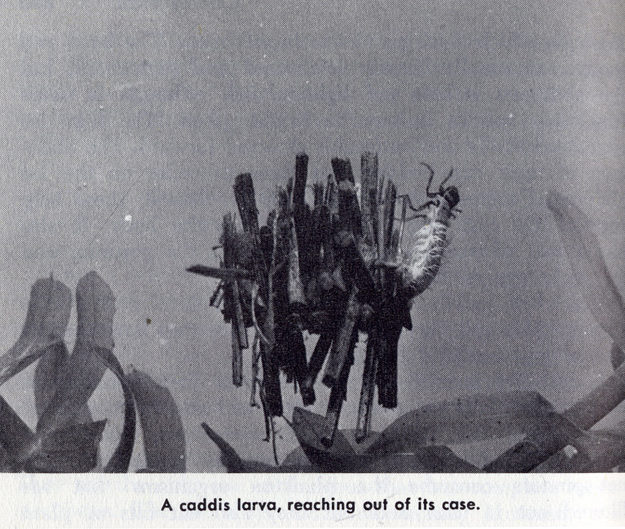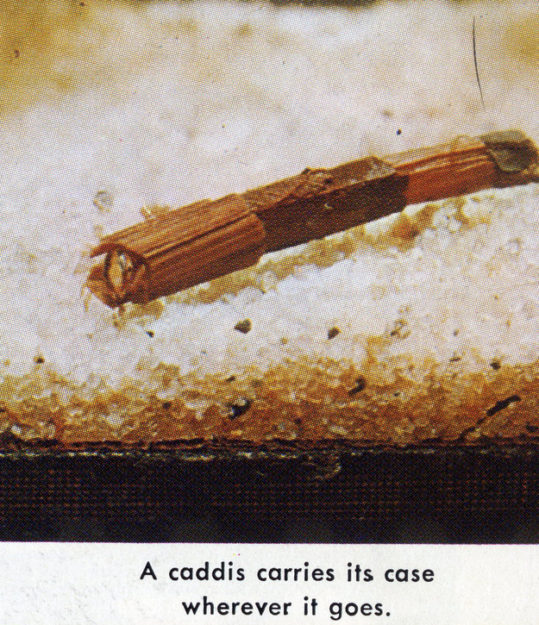Elsie B. Klots, Freshwater Life, New York, G.P. Putnam’s Sons, 1966, pp. 253-255.
Many of the cases are incredibly beautiful as well as ingenious constructed. An arched cylinder of crystal-clear sand grains interspersed with bright translucent pink grains; a slender cone, reflecting light a though made of silver sequins; a rectangular pyramid of alternate layers of dark and light fagots; a helicoïdal simulated snail shell made of sand; all of these, as well as a great variety of short tubes and long tubes, made from a great variety of mineral and plant materials, are constructed to house the inmature caddis, and thereby to delight the collector’s eye.

The majority of species build true cases. First they spin a silken tubes. In this they embed pieces of leaves, sticks or other vegetation, grains of sand, tiny stones, even tiny shells. Many of the bits of vegetation will have been especially cut to size for the purpose and then laid end to end, or parrallel to one anather in a geometrically woven pattern or spiral. It is all done with seeming precision and uniformity, for most species always make the same type of case from the same type of material. Occasionally a species will use a variety of materials, and occasionally an individual will start with one substances and then switch to another. Some of the cases appear too heavy and cumbersome for the small larva within. But the heaviest ones are usually buit by those living in fast waters where the weight of the case is of value in anchoring it. Furthermore a bubble or two of air inside can give it buoyancy and make it comparratively wightless.
